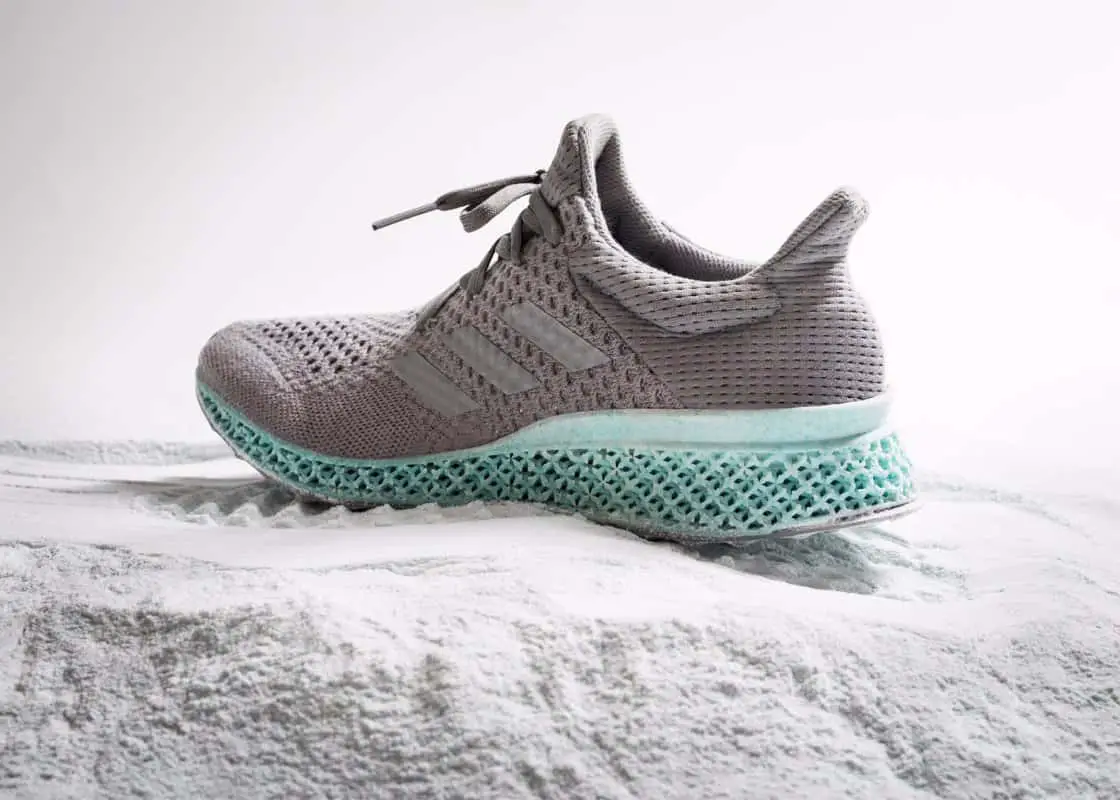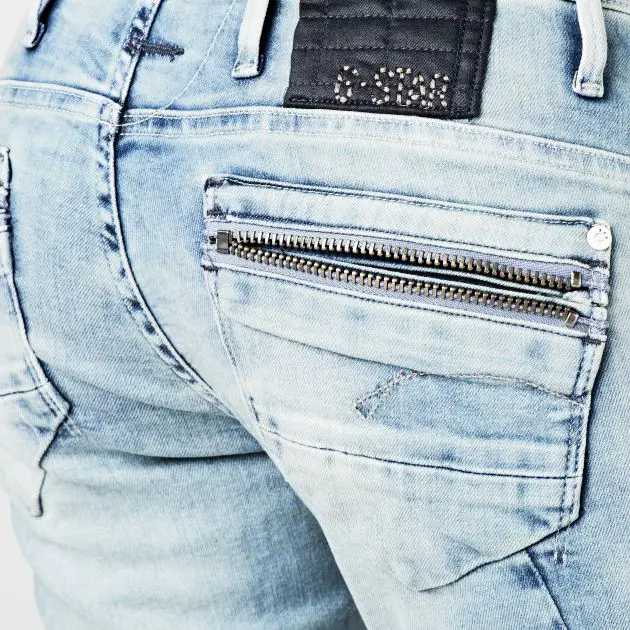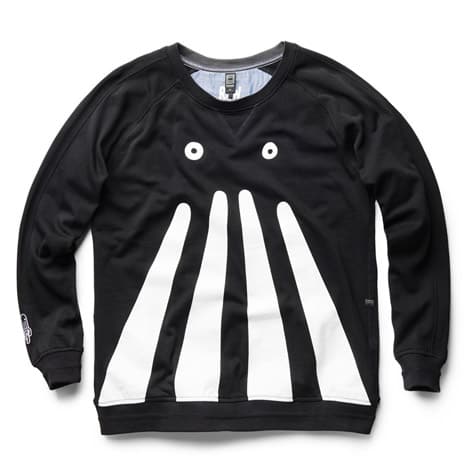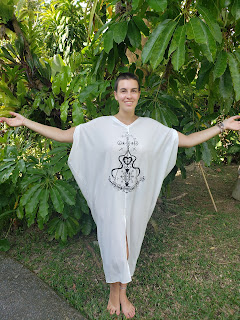CAN RECYCLED PLASTIC CLOTHING DO MORE HARM THAN GOOD?
By Chere Di Boscio
It seems the oceans have become a new textile hunting ground for many top brands including Adidas, G-Star Raw, Patagonia and others. These companies have been creating clothing from plastics collected from the oceans, which is then recycled into fibres. Adidas, for example, has combined Ocean Plastics with a zero waste 3D-printing technique to manufacture a stylish athletic shoe as part of their partnership with Parley for the Oceans, an initiative that encourages repurposing ocean waste and raising awareness of our increasingly dire plastics problems.


Owner of Bionic Yarn, a textile company that bases its production on reclaimed ocean plastics, Pharrell Williams has launched his third collection with G-Star RAW, which features urban streetwear made from this innovative fabric. The line includes perfectly cut jeans, jackets, T-shirts and hoodies – none of which you would imagine ever existed in plastic form at one point.


Yet another eco-minded fashion label using recycled plastics is Outerknown, launched by surfer legend Kelly Slater, who designed a line of 100% recyclable clothing made from reclaimed fishing nets. His motivation is noble “Single-use plastics all through the ocean, degrading, turning into little bits that are all eaten by the sea life, and they’re dying because their stomachs are full of stuff,” Slater said in an interview with CNN. But little did he know that the very clothing he was creating with the aim of ending such pollution may well be exacerbating it.


Teeny Particles
Researchers have found that these well intended brands may be doing more harm than good by introducing recycled plastic clothing into the wash cycle. Apparently, microfibers — tiny synthetic threads less than 1 mm in size — may actually be the biggest source of plastic in the ocean. And many of them may come from simply washing synthetic clothing.
Earth Island reports that Dr. Mark Browne, an ecologist and postdoctoral fellow at the National Center of Ecological Analysis and Synthesis in Santa Barbara, California, states that every time a synthetic garment — that is, anything made from non-organic fibres – goes through the spin and rinse cycle in a washing machine, it sheds a large number of plastic fibers. Most washing machines don’t have filters to trap these miniscule microfibers, and neither do sewage plants that are responsible for removing contaminants. So every time the water drains from a washing machine, plastic filaments are swept through the sewers and eventually end up in the ocean.
In 2011, Browne published a paper in Environmental Science & Technology stating that one single synthetic garment can produce more than 1,900 microfibres per wash, with fleeces being the worst offenders – but even smooth synthetics like nylon shed significantly. Compound billions of people washing billions of garments billions of times in a year, and the effects are clearly effects are devastating.
But the news is worse. We all know plastic is toxic in itself, but studies show it can actually absorb other toxins, like pesticides or organic pollutants such as polychlorinated biphenyls. When microplastics enter the ocean, they work their way up the food chain, being eaten by bottom feeders swallowed by bigger fish…and eventually, they end up back on our plate. We mentioned this issue in the past, but as related to the toxic effects that microbeads in beauty products were having on the ocean. Now it turns out that fashion is having the same effect.
One of the main campaigners against microbeads – Five Gyres – is now also turning their efforts to all microfibres in the oceans. The results of one of their most recent studies concludes that there are over 5 trillion pieces of plastic in the ocean, collectively weighing more than 250,000 tons. With a global population of 7.2 billion people, that means there are about 700 plastic pieces in the ocean for every person on Earth. With an ever growing and wealthier population, Five Gyres predicts that another 33 billion tons of plastic will be added to the environment by 2050.
Despite much evidence pointing to the dangers of producing clothing from synthetics, the head researcher of the study, Dr Mark Browne says he’s had a hard time getting textile companies to listen. He launched a project called Benign by Design, a research project aiming to determine and remove features of textiles that have negative impacts on humans and the environment, but when he asked for support for this worthy cause by the fashion industry, he was stonewalled by all but one – the truly superlative eco-luxury brand Eileen Fisher. Other brands including Patagonia, Polartec, and Nike rejected , and even the ostensibly eco-friendly Patagonia told Browne his extensive research was still ” too preliminary” to justify company funding. But watching this video below may well change their minds!
Better Solutions
While pressuring brands to support Browne’s initiative is certainly a step in the right direction, given the fact that most clothing is actually made from synthetics, there have been calls to solve the microfibre problem by introducing screens to washing machines that would filter the plastic particles out, but these would have to be fitted to new machines, and by the time these became widespread, the problem will have become even graver.
Another measure we can take is to recycle ocean plastic into items that needn’t be washed frequently, like furniture. One design house who is doing this to perfection is Studio Swine. Featured recently in an exhibition at London’s Selfridges department store, these innovators are gaining a strong reputation for clever recycling of trash into objects for the home.


What truly matters is that the clothing industry is willing to take the findings of environmental scientific research seriously and apply it to textile sourcing. This is true not only for the ‘eco’ brands based on recycled plastics, but also for any clothing manufacturer that uses acrylic, polyester and other textiles that shed toxic microfibres. And ultimately, it’s up to us to make well informed decisions about our fashion purchases, and to think twice every time we buy something that may end up as ocean plastic in the first place.
Source: https://eluxemagazine.com/magazine/recycled-plastic-clothing/
Source: https://eluxemagazine.com/magazine/recycled-plastic-clothing/


Comments